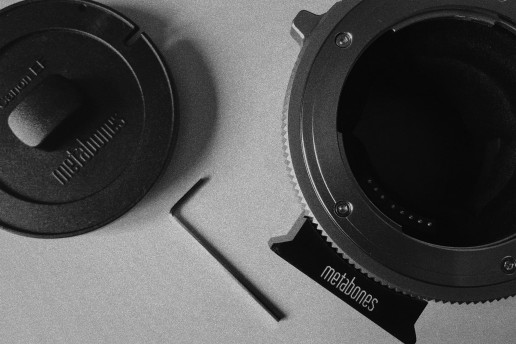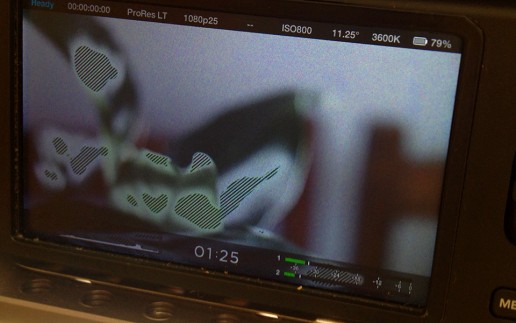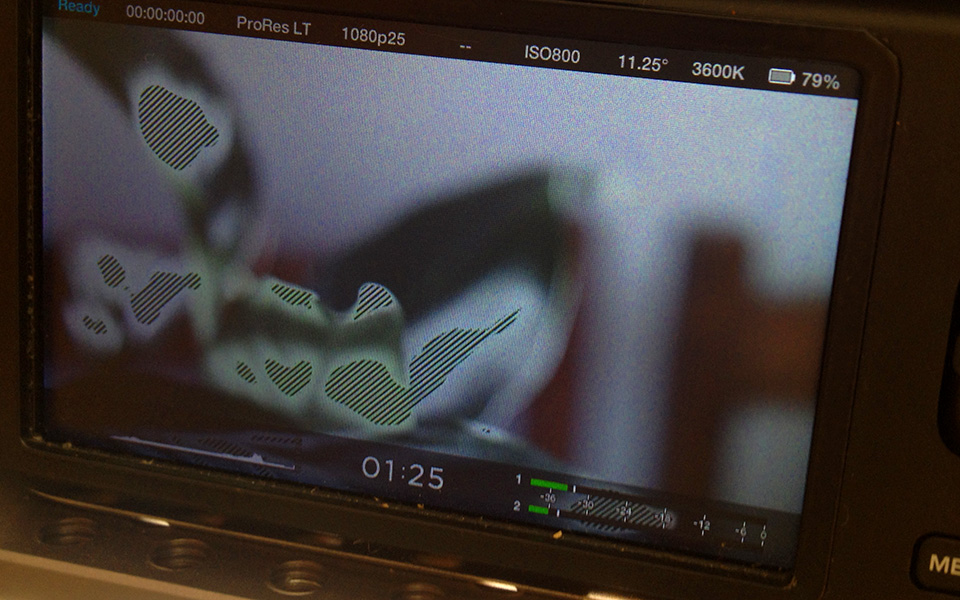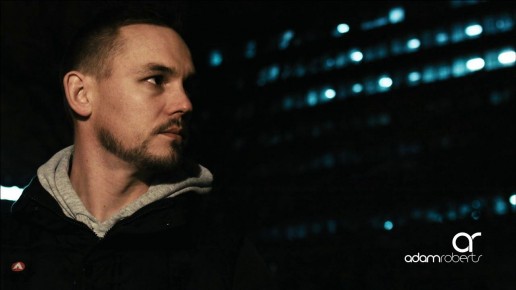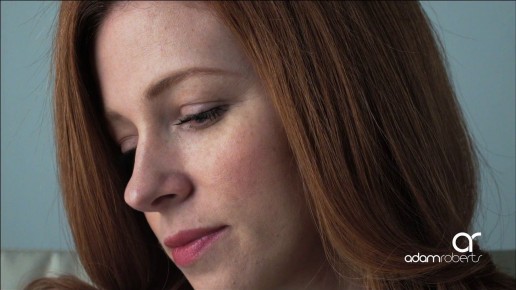Shimming your Metabones CINE Smart Adapter
I’ve been a long time Metabones customer. I purchased my first Smart Adaptor (the MK2, which I still own) back in 2012 to use on my Sony FS100 and Sony NEX5. I’ve also owned various versions of their Speed Boosters (Nikon to MFT, Nikon to BMCC, Nikon to BMPCC, Canon to BMPCC, Canon to E Mount) and some of their “Dumb” Adaptors (Nikon G to MFT, Nikon G to E Mount) over the years.
Metabones build quality has always been pretty solid and they has been my “goto” adaptor and ones that I often recommend when anyone asks.
Until recently I was using the “EF – E Mount T Smart Adapter (Mark IV)” but I sold that after buying the Sigma MC11 as most of my EF glass is from Sigma and I get much better AF performance with the MC11 on the A7RII and A6300.
With the launch of the new CINE Series mounts I thought I’d grab one to use on my Sony PXW-FS5 as I love the idea of locking my lens in place and having better manual focus control. Locking the mount and the lens means there is no play in the lens when you are pulling focus. This is a real issue when using “stills” lenses.
So I ordered a “Canon EF Lens to Sony E Mount T CINE Smart Adapter” and when it arrived I ran a few tests and I was a little disappointed to find the following issue: With the Sigma MC11, my Sigma 18-35 f1.8 is Parfocal. It holds focus throughout the zoom range. With the Metabones “Canon EF Lens to Sony E Mount T CINE Smart Adapter” it does not hold focus. I remember that this was also the case with the “EF – E Mount T Smart Adapter (Mark IV)”.
So I checked the flange focal distance (FFD) of the adaptors and here is what I found:
Sony E Mount FFD is 18mm.
Canon EF FFD is 44mm.
This means the adaptor needs to be 26mm to fill the gap.
When I measure, with a vernier calliper, the Sigma MC11 it is spot on 26mm. As it should be.
When I measure the Metabones EF – E Mount T Cine Smart Adaptor is reads 25.9mm. So it’s out by 0.1mm.
That’s a pretty big difference with it comes to lens mounts an is enough to cause any parfocal lens to shift focus as you zoom.
Why is this? Seems silly to have a Cine mount that locks the lens in place but is not accurate for focus work. If the mount and adaptor were old I could understand it being out by that much due to wear and tear but this is a new adaptor.
So I contacted Metabones Support. After a week I’d heard nothing back. So I though “Can I shim the mount to correct this?”
Looking at the adaptor, the front mount plate seemed the best option to shim. So I removed it to have a look how it was assemble. What I found was a pretty simple design that looked easy to shim and as it turned out it was and the result was I was able to correct the FFD and the Sigma 18-35 is now parfocal again.
Below are the steps I took (warning, this may void your warranty and you follow these steps entirely at your own risk).
Things you’ll need:
1.5mm hex key (normally supplied with the adaptor)
Craft knife or scalpe blade
Cutting mat
Hole punch or sharp point (a small Phillips screw driver will do)
Strong film to make the shim from (I used so lighting gel)
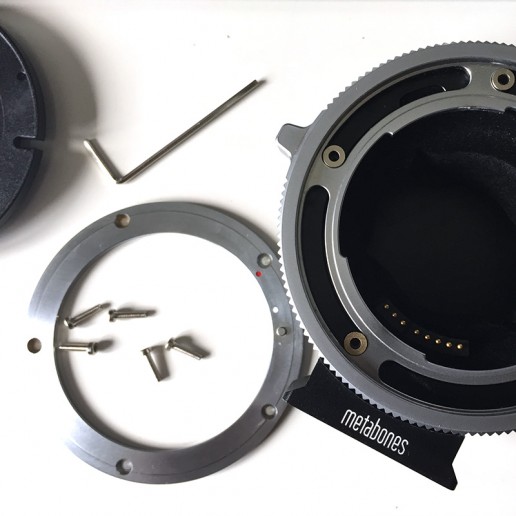
Step 1
Remove the 5 screws from the front of the mount with a 1.5mm hex key and carefully lift out the mount plate. Careful not to drop the small spacers that support the mount. Leave them inside the adaptor.
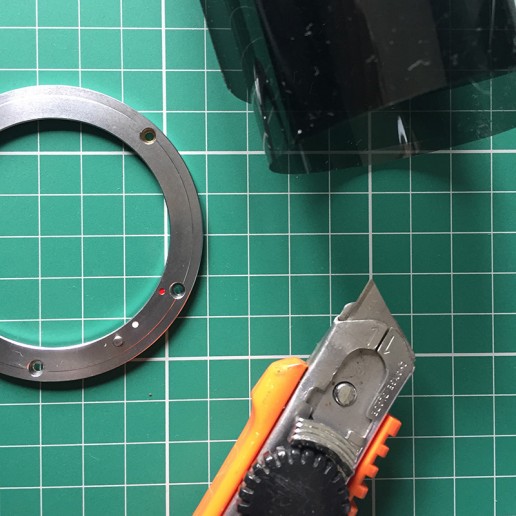
Step 2
Now over to the cutting mat use the mount plate as a template to cut your shim from the film. I used some lighting gel film.
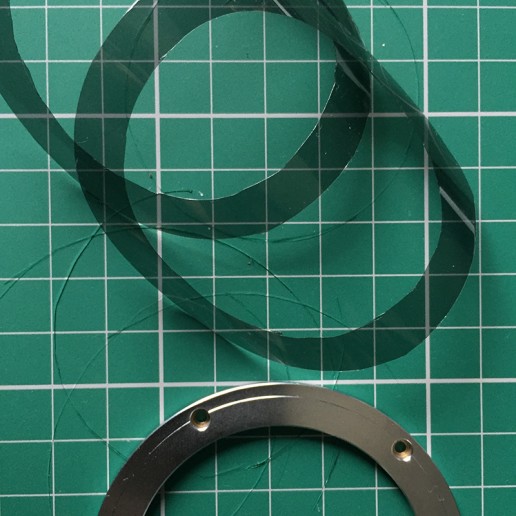
Step 3
Cut your shim to match the front plate. In my case I cut 2 to get the right thickness.
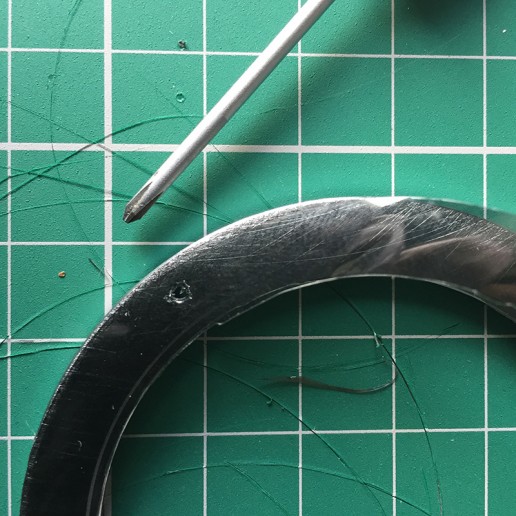
Step 4
Once you have the shims cut you’ll need to make holes for the screws. Best is to use a hole punch tool or a sharp point but a small Phillips head screwdriver will also do the trick.
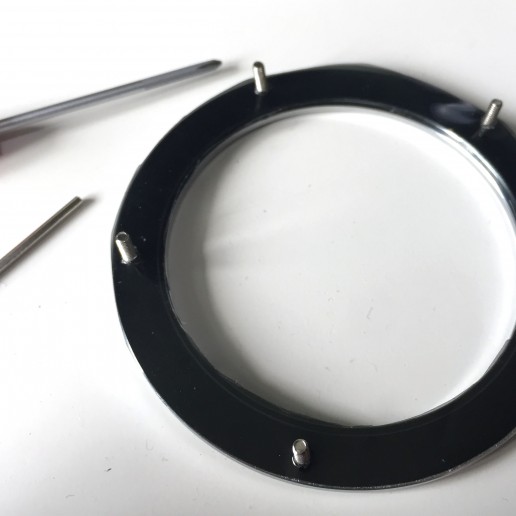
Step 5
Now inset the screws through the mount and the shims. As the holes in the shims are tight they should hold the screws in place and the shims should align nicely.
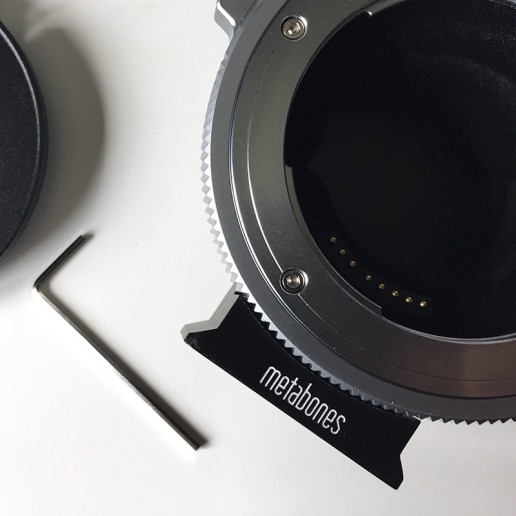
Step 6
Carefully flip the mount plate over and align the screws with the holes in the supports inside adaptor. Tighten all the screws with the 1.5mm hex key alternating sides as you do so.
That’s it. Now test to see if you have shimmed it enough.
As with any mount over time the mounting and un-mounting of lenses will cause wear and tear and the accuracy of the mount will start to drift so you might need to re-shim the mount in the future. Now you know how.
Hope that’s been of some help.
Blackmagic Camera Update - 1.9.3
So it's finally here, the update everyone has been waiting for and with so much more to offer.
Blackmagic has just released firmware update 1.9.3 for the BMCC and BMPCC. After testing it over the past week here is what you get in the new update. It brings time remaining, audio meters and histogram, first seen on the BMPC4K in firmware 1.9, to the BMCC and BMPCC. It also adds a few other nice little touches that have long been requested.
These new additions have been implemented as a bar across the bottom of the screen. This bar can be shown and hidden with a simple swipe up and down on the screen on the BMCC or clicking the up or down buttons on the BMPCC. When using manual lenses the IRIS button will also show and hide the display. This means we can now monitor out audio and set the correct gain to begin with. This is a big plus for those who shot on their own or without a sound person on set.
The histogram is a nice addition as it gives you more detail on your exposure. Until now we have only had zebras to help us judge what elements might be clipping.
Something to note on the histogram is that it is based on the "processed" image data so it is affected by the ISO you select where as the zebras reflect sensor data, showing clipping at the sensor level and are not affected by your ISO choice.
Time remaining is a simple hours and minutes display that show how much you can still record in the currently selected format. When shooting RAW on the BMPCC the time is approximate a the RAW frames vary in size depending on what is in the frame due to how the Compressed CinemaDNG writes data to the file.
Looking at the other additions, we now have more shutter angles available. This opens up some nice creative opportunities as well as dealing with technical issues like flicker when working under some artificial light sources.
Shutter Angles:
11.25°, 15°, 22.5°, 30°, 37.5°, 45°, 60°, 72°, 75°, 90°, 108°, 120°, 144°, 150°, 172.8°, 180°, 216°, 270°, 324°, 360°
Second we now have more white balance options. So you'll be able to dial in a more accurate white balance on set.
White Balance options:
2500K, 2800K, 3000K, 3200K, 3400K, 3600K, 4000K, 4500K, 4800K, 5000K, 5200K, 5400K, 5600K, 6000K, 6500K, 7000K, 7500K, 8000K
A few issues
So with the added white balance and shutter angle options you'll be spending more time in the menus...
On the pocket it's a minimum of 4 clicks before you can change the white balance. You also can't see what the effect of the change is until you exit the menu, another 2 clicks (or hitting the record button once). If you then need to adjust it again it's 4 more clicks. Seems very long winded.
The camera returns to the last menu item if you exit by hitting the record button. Problem is that if you hit record while in the menu it starts to record.
So now if you hit menu then navigate to the white balance and make a change, then hit the record button to exit, when you hit the menu it returns you to the white balance setting (or what ever the last setting you used). One click in, onc click out. This could be a huge time saver but sadly it only really works without a card in the camera. What Blackmagic need to do is perhaps set the menu button on the BMPCC to exit the menu rather then go up a level.
Another issue is that the histogram does not show clipping. So if you have your zebras turned off the histogram can be a little deceiving as you could be clipping your highlights without knowing.
These features and the addition of other ProRes codecs in firmware 1.8.2 really make these cameras shine. It's good to see Blackmagic are still committed to their early cameras like the BMCC while developing new ones like the URSA.
Get the update here: www.blackmagicdesign.com/support/family/professional-cameras
Blackmagic Cinema Camera – Lowlight Test
A quick and dirty sensor stress test.
There had been a great deal of discussions on the Blackmagic forums about how the Blackmagic Cinema Camera performs when under exposed in lowlight conditions (http://forum.blackmagicdesign.com/viewtopic.php?f=2&t=4269). This test was based on those discussions.
We used the Sony NEX-FS100, recording to ProRes HQ via an Atomos Ninja 2, as known refrences for comparison. All shots were underexposed by over 2 stops.
No noise reduction was done in post and there is a rolling noise pattern in the BMCC footage but at over 2 stops under exposed I'd expect to see sensor take strain.
Light meter reading
ISO1600
180º Shutter (1/50th)
Aperture f/0.9
Camera Set-up
ISO1600, 25p, 180º Shutter (1/50th)
Sony NEX-FS100
Lens: Carl Zeiss ZF.2 Planar T* 1,4/50 @ f/5.6
Picture Profile: G-Log Ultimate 1.0
Recorded in ProRes HQ via an Atomos Ninja 2
Blackmagic Cinema Camera
Lens: Carl Zeiss ZF.2 Distagon T* 2/35 @ f/5.6
Shot in ProRes HQ - Film and 2.5K RAW
Sample DNGs can be downloaded here: dl.dropbox.com/u/6460491/Lowlight_DNG.zip
Blackmagic Cinema Camera - Hair and Skintone Test
A simple Hair and Skintone test.
We wanted to test the new Blackmagic Cinema Camera to see how it performed with skintones and hair. We used the Sony NEX-FS100 and Canon 5D MK2 as known refrences for comparison.
This test was done so we could find out how the BMCC could fit into out work flow. It was not a scientific lab test nor was it a test to see which camera was better.
The BMCC likes to be exposed to the right and the footage here is probably 1-2 stops under exposed.
Sample DNGs can be downloaded here:
dl.dropbox.com/u/6460491/BMCC_skintone_test.zip
Notes on workflow:
Canon 5D Mark II
Lens: Canon EF 100mm F2.8 L IS USM Macro @ f/5.6
Picture Profile: Technicolor's CineStyle Profile
Sony NEX-FS100
Lens: Carl Zeiss ZF.2 Planar T* 1,4/50 @ f/5.6
Picture Profile: G-Log Ultimate 1.0
Blackmagic Cinema Camera
Lens: Carl Zeiss ZF.2 Distagon T* 2/35 @ f/5.6
Shot in 2.5K RAW
Both the Sony NEX-FS100 and the Canon 5DMK2 footage was transcoded to ProRes HQ with 5DtoRGB. I then colour corrected the footage in Final Cut Pro X.
The Blackmagic footage was exported from Resolve in 3 ways as I wanted to test different work flows.
• 1st option I applied a Rec709 LUT to the RAW files and exported ProRes HQ 1080p.
• 2nd option I applied the BMC Film LUT to the RAW files and exported ProRes HQ 1080p.
Both methods involved not colour correction in Resolve. All that was do was a LUT was applied to the RAW files. I then colour corrected the footage in Final Cut Pro X.
• In the 3rd option I graded the footage in Resolve with a single node and exported ProRes HQ 1080p
All footage was then edited in ProRes HQ in Final Cut Pro X.
Quick Sony Alpha NEX-5 hands-on review
Sony recently gave me a Sony Alpha NEX-5 to shoot a short film that is currently in preproduction. I had approached them in the hope that they might loan me one of the new Alpha A55’s but they were keen to see what I could do with the NEX-5.
A week later an NEX-5 kit (with 18-55mm lens) arrived on my desk along with a 16mm f/2.8.
There are currently only 3 E-series lenses available for the NEX-5. The other lens is the 18-200mm. You also have the option of buying the Alpha A mount adapter that lets you connect various Sony Alpha lens. There is another 3rd party option from Lensbaby but I’ll cover that in another review.
Over the last month I’ve been getting my head around what it can and can’t do. Overall I’ve been pretty impressed. I’m not a fan of the ergonomics but then I’m used to shooting with my Nikon D700 which is much bigger and much heavier so the NEX-5 feels to small in my hand.
Shortly after it arrived I upgraded the firmware which included the ability to customize the soft buttons on the rear making it much easier to use in full manual mode as you can now access various settings much faster.
Image quality is great as you would expect from a DX size sensor. The sweep pano mode is also really nice tho it does have it’s limitations.
I’ve found the auto focus struggles in low light.
As a stills camera it can stand it’s ground against the entry and mid range DSLR’s but the real reason I had been given it was to shoot video... so time to do some tests.
It shoots in AVHD mode (H.264) at full HD (1920x1080) at 25 FPS. (The US version shoots at 60i) and the image quality is surprisingly good. The biggest downfall is that, while in Stills mode you have full manual control over the exposure, in Video mode it switches to Auto Gain and will often over or under expose a shot. This is most noticeable if you have a high contrast scene and your brightest area is on the edges of the frame.
As an example we used the camera to shoot some video for the Sony Photo Challenge which we shot in a black sound studio (See Vimeo clip below). We were going for a film noir look and wanted high contrast images. In one scene the presenter enters frame by stepping out of the darkness into the light. We set-up the focus and exposure for the when the presenter was in the light but as soon as he stepped out of the light the camera increased the gain (and noise) to try and expose the dark area. Not what we wanted. In the end we had to resort to fixing it in post. This should be easy to fix in a firmware update. Lets see if Sony is listening to it’s users.
